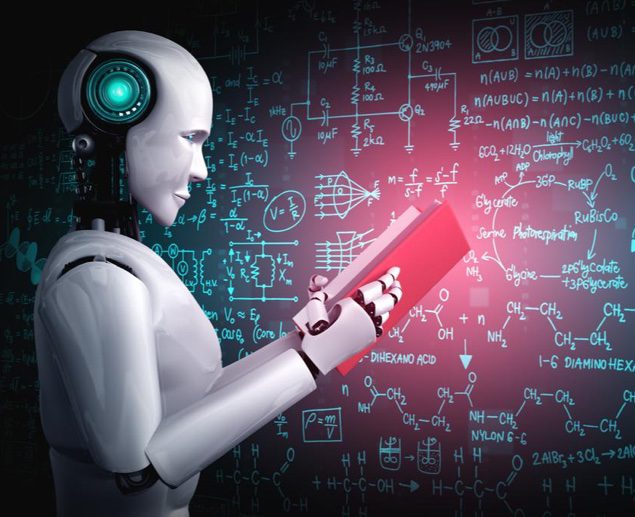By any evaluate, artificial intelligence (AI) has develop into significant business enterprise.
According to Gartner, consumers all over the world will devote $62.5 billion on AI software in 2022. And it notes that 48 per cent of CIOs have either previously deployed some form of AI program or strategy to do so in the subsequent twelve months.
All that shelling out has captivated a substantial crop of startups focused on AI-dependent products. CB Insights claimed that AI funding strike $15.1 billion in the initial quarter of 2022 by yourself. And that came right just after a quarter that noticed investors pour $17.1 billion into AI startups. Offered that facts drives AI, it’s no shock that linked fields like data analytics, machine learning and business intelligence are all viewing quick development.
But what specifically is artificial intelligence? And why has it become these an vital — and profitable — part of the technology field?
Also see: Prime AI Software
What Is Artificial Intelligence?
In some methods, artificial intelligence is the opposite of purely natural intelligence. If residing creatures can be reported to be born with all-natural intelligence, person-built equipment can be reported to have synthetic intelligence. So from a sure issue of watch, any “thinking machine” has artificial intelligence.
And in point, a person of the early pioneers of AI, John McCarthy, defined synthetic intelligence as “the science and engineering of building intelligent equipment.”
In exercise, having said that, personal computer experts use the phrase artificial intelligence to refer to machines doing the sort of contemplating that human beings have taken to a really higher stage.
Desktops are really great at earning calculations — at taking inputs, manipulating them, and building outputs as a final result. But in the previous they have not been capable of other sorts of do the job that humans excel at, these types of as comprehending and generating language, figuring out objects by sight, building artwork, or learning from past experience.
But which is all shifting.
Now, several laptop units have the means to talk with individuals working with normal speech. They can realize faces and other objects. They use device discovering techniques, primarily deep learning, in approaches that enable them to understand from the past and make predictions about the long run.
So how did we get here?
Also see: How AI is Altering Computer software Growth with AI-Augmentation
A Short Background of Synthetic Intelligence
Several individuals trace the historical past of synthetic intelligence back to 1950, when Alan Turing released “Computing Machinery and Intelligence.” Turing’s essay started, “I propose to take into consideration the dilemma, ‘Can machines feel?’” It then laid out a circumstance that came to be recognised as a Turing Check. Turing proposed that a computer could be regarded intelligent if a human being could not distinguish the device from a human remaining.
In 1956, John McCarthy and Marvin Minsky hosted the to start with artificial intelligence conference, the Dartmouth Summer Study Venture on Artificial Intelligence (DSRPAI). It certain personal computer experts that artificial intelligence was an achievable target, setting the foundation for several many years of even further investigate. And early forays into AI technological innovation created bots that could enjoy checkers and chess.
The 1960s observed the advancement of robots and numerous difficulty-resolving systems. Just one noteworthy emphasize was the development of ELIZA, a system that simulated psychotherapy and provided an early case in point of human-device communication.
In the 1970s and 80s, AI growth continued but at a slower speed. The discipline of robotics in particular saw sizeable innovations, these types of as robots that could see and wander. And Mercedes-Benz released the initially (really constrained) autonomous vehicle. Nonetheless, govt funding for AI research lessened dramatically, main to a time period some refer to as the “AI winter season.”
Desire in AI surged yet again in the 1990s. The Artificial Linguistic Online Pc Entity (ALICE) chatbot demonstrated that natural language processing could guide to human-laptop or computer communication that felt considerably more natural than what experienced been probable with ELIZA. The decade also saw a surge in analytic strategies that would form the foundation of later on AI development, as nicely as the development of the 1st recurrent neural network architecture. This was also the 10 years when IBM rolled out its Deep Blue chess AI, the initial to gain against the present-day earth champion.
The to start with 10 years of the 2000s noticed speedy innovation in robotics. The first Roombas commenced vacuuming rugs, and robots introduced by NASA explored Mars. Nearer to house, Google was doing the job on a driverless vehicle.
The several years considering that 2010 have been marked by unprecedented improves in AI technologies. The two components and software produced to a position where by item recognition, natural language processing, and voice assistants turned possible. IBM’s Watson gained Jeopardy. Siri, Alexa, and Cortana came into remaining, and chatbots became a fixture of contemporary retail. Google DeepMind’s AlphaGo defeat human Go champions. And enterprises in all industries have started deploying AI tools to assistance them analyze their details and turn out to be additional productive.
Now AI is really commencing to evolve past some of the narrow and constrained styles into more highly developed implementations.
Also see: The Historical past of Artificial Intelligence
Styles of AI
Different groups of laptop or computer researchers have proposed unique ways of classifying the forms of AI. Just one well known classification takes advantage of 3 classes:
- Slender AI does 1 thing actually effectively. Apple’s Siri, IBM’s Watson, and Google’s AlphaGo are all illustrations of Slender AI. Narrow AI is quite prevalent in the entire world now.
- Normal AI is a theoretical variety of AI that performs most intellectual jobs on par with a human. Examples from well-known movies may possibly involve HAL from “2001: A Room Odyssey” or J.A.R.V.I.S. from “Iron Gentleman.” Several scientists are now working on creating standard AI.
- Tremendous AI, which is also continue to theoretical, has intellectual capacities that considerably outstrip all those of humans. This variety of artificial intelligence is not still near to turning out to be a fact.
Yet another preferred classification utilizes four different types:
- Reactive devices just take an enter and provide an output, but they do not have any memory or understand from previous experience. The bots you can enjoy in opposition to in quite a few video games are very good examples of reactive machines.
- Minimal memory equipment can search a minor way again into the earlier. Lots of of the cars on the road currently have advanced protection characteristics that would slide into this category. For instance, if your auto troubles a backup warning when a auto or individual is about to move driving your car or truck, it is using a limited established of historical information to come to conclusions and produce outputs.
- Concept of brain devices are knowledgeable that human beings and other entities exist and have their very own unbiased motivations. Most researchers agree that this type of AI has not still been made, and some researchers say that we should not try to do so.
- Self-informed equipment are mindful of their have existence and identities. While a several scientists assert that self-mindful AI exists right now, only a handful of people share this feeling. Acquiring self-knowledgeable AI is hugely controversial.
Whilst these classifications are appealing from a theoretical standpoint, most organizations are far more intrigued in what they can do with AI. And that brings us to the factor of AI that is creating a whole lot of revenue — the AI use circumstances.
Also see: A few Methods to Get Started out with AI
AI Use Circumstances
The achievable AI use conditions and apps for artificial intelligence are limitless. Some of today’s most widespread AI use cases contain the following:
- Advice engines — Irrespective of whether you’re purchasing for a new sweater, looking for a movie to observe, scrolling as a result of social media or trying to come across legitimate really like, you are likely to experience an AI-based algorithm that would make solutions. Most recommendation engines use device studying models to look at your features and historic actions to that of individuals close to you. The versions can be pretty fantastic at identifying choices even when people are not knowledgeable of those preferences on their own.
- Natural language processing — Purely natural language processing (NLP) is a wide category of AI that encompasses speech-to-textual content, textual content-to-speech, search term identification, information and facts extraction, translation and language technology. It permits individuals and pcs to interact by way of normal human language (audio or typed), relatively than as a result of programming languages. Mainly because quite a few NLP applications integrate machine finding out abilities, they tend to make improvements to above time.
- Sentiment investigation — AI can not only have an understanding of human language, it can also discover the thoughts underpinning human discussion. For case in point, AI can assess 1000’s of tech support discussions or social media interactions and establish which prospects are experiencing solid optimistic or unfavorable emotions. This kind of examination can allow purchaser assistance groups to concentrate on clients that could be at possibility of defecting and/or incredibly enthusiastic supporters who could be encouraged to develop into advocates for the brand.
- Voice assistants — A lot of of us interact with Siri, Alexa, Cortana or Google on a every day foundation. Though we usually take these assistants for granted, they incorporate highly developed AI methods, including natural language processing and device studying.
- Fraud prevention — Economic providers firms and merchants frequently use highly superior equipment discovering approaches to establish fraudulent transactions. They seem for styles in money details, and when a transaction seems to be abnormal or suits a acknowledged sample of fraud, they difficulty alerts that can cease or mitigate legal activity.
- Picture recognition — Lots of of us use AI-based mostly facial recognition to unlock our telephones. This type of AI also allows autonomous cars and makes it possible for for automated processing of quite a few well being-linked scans and tests.
- Predictive servicing — Many industries like production, oil and fuel, transportation, and vitality rely closely on equipment, and when that machinery encounters downtime, it can be extremely pricey. Corporations are now utilizing a mixture of item recognition and equipment studying approaches to discover in progress when products is probably to split down so that they can routine routine maintenance at a time when it minimizes disruptions.
- Predictive and proscriptive analytics — Predictive algorithms can assess just about any type of enterprise knowledge and use that as the basis for forecasting likely foreseeable future occasions. Prescriptive analytics, which is however in its infancy, goes a step further more and not only can make a forecast, but also presents suggestions as to what corporations should really do to put together for possible upcoming gatherings.
- Autonomous motor vehicles — Most of the automobiles in generation currently have some autonomous features, these types of as parking guidance, lane centering and adaptive cruise. And while they are nevertheless expensive and somewhat unusual, entirely autonomous automobiles are now on the road, and the AI engineering that powers them is acquiring greater and much less highly-priced each and every working day.
- Robotics — Industrial robots had been a single of the earliest implementations of AI, and they continue on to be an critical element of the AI industry. Buyer robots, these kinds of as robotic vacuum cleaners, bartenders, and lawn mowers, are getting increasingly commonplace.
Of training course, these are just some of the additional broadly acknowledged use situations for AI. The technology is seeping into day by day life in so numerous techniques that we generally are not fully conscious of them.
Also see: Best Equipment Mastering Platforms
The Foreseeable future of AI
So where is the potential of AI? Evidently it is reshaping purchaser and small business marketplaces.
The technology that powers AI continues to progress at a regular charge. Long run developments like quantum computing might sooner or later empower big new improvements, but for the near term, it appears to be likely that the technology by itself will carry on together a predictable path of continual improvement.
What’s fewer crystal clear is how people will adapt to AI. This concern poses inquiries that loom substantial over human life in the a long time in advance.
Many early AI implementations have operate into main difficulties. In some situations, the details employed to prepare versions has permitted bias to infect AI techniques, rendering them unusable.
In lots of other circumstances, business have not seen the fiscal success they hoped for following deploying AI. The technologies may be experienced, but the small business processes surrounding it are not.
“The AI program marketplace is choosing up speed, but its prolonged-term trajectory will depend on enterprises advancing their AI maturity,” explained Alys Woodward, senior study director at Gartner.
“Successful AI company results will rely on the cautious choice of use scenarios,” Woodware included. “Use situations that produce substantial business price, still can be scaled to reduce hazard, are vital to display the effect of AI investment decision to small business stakeholders.”
Businesses are turning to approaches like AIOps to enable them improved deal with their AI deployments. And they are progressively hunting for human-centered AI that harnesses synthetic intelligence to augment rather than to replace human workers.
In a incredibly serious sense, the foreseeable future of AI may be much more about people than about machines.
Also see: The Foreseeable future of Synthetic Intelligence




